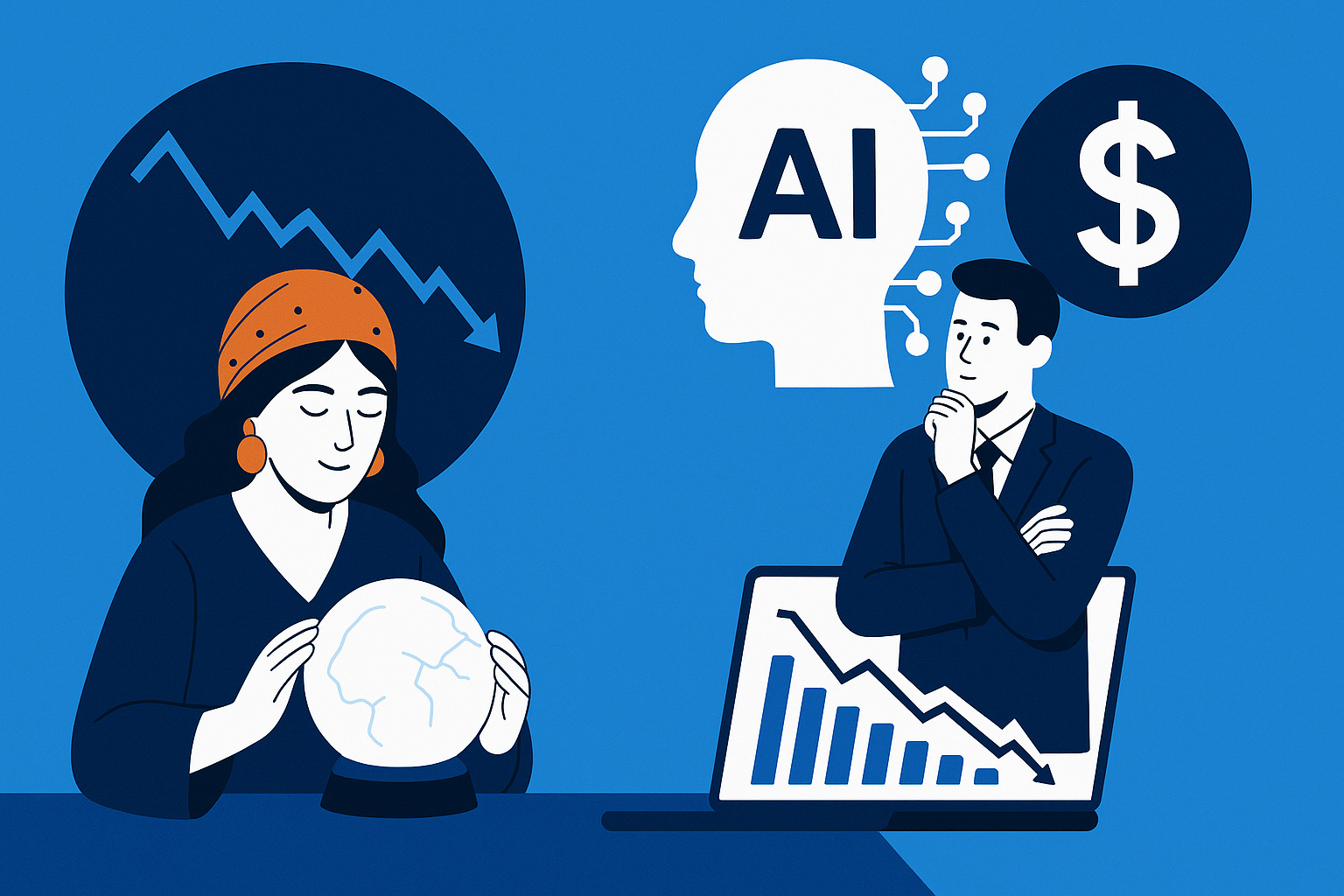Introduction – From Crystal Balls to Code: The AI Takeover of Risk Analysis
For decades, financial risk analysis has relied on formulas, static models, and seasoned intuition. But in a volatile global economy where market shocks happen in seconds and data multiplies by the minute, the old ways are cracking under pressure. Enter artificial intelligence—not just as a tool, but as a paradigm shift.
Forget crystal balls. AI doesn’t predict risk through patterns—it exposes it through real-time precision. Traditional models struggle with black swan events, correlated market failures, and complex fraud schemes. AI, however, thrives in complexity. It adapts. It learns. It detects the outliers humans miss and reacts faster than regulatory filings can catch up.
This article explores how machine learning is redefining the core of financial risk analysis. From real-time data ingestion to predictive modeling, from anomaly detection to fraud prevention—AI isn’t just improving risk management. It’s making human-led forecasting look dangerously outdated.
The future of risk is no longer in spreadsheets or seasoned guesswork. It’s in code that thinks faster than any analyst ever could.
Traditional Risk Models Are Broken
Financial institutions have long leaned on risk models rooted in historical data, predefined rules, and static assumptions. These models were built for a slower, more predictable world—one where market shifts unfolded over quarters, not minutes. Today, that approach is not just outdated—it’s dangerous.
Traditional risk analysis depends heavily on linear models, spreadsheets, and human judgment. But risk is rarely linear. It’s messy, nonlinear, and often driven by a web of interconnected variables that static tools simply can’t track or interpret in real time. Worse, these systems assume the past is a reliable predictor of the future—a notion repeatedly disproven by financial crises, from 2008 to the crypto collapses of recent years.
Human-driven processes are also painfully slow. By the time analysts detect a warning signal, the damage is often done. Not to mention the biases that creep into risk assessment—whether in credit scoring, underwriting, or investment decisions. Cognitive shortcuts, confirmation bias, and flawed assumptions are baked into traditional methods.
In a world where market sentiment shifts in seconds and global events send shockwaves across portfolios instantly, risk cannot be evaluated by static frameworks. The financial world has outgrown the tools that once governed it.
Real-Time Risk Sensing: AI Learns Faster Than You React
What sets AI apart in risk analysis isn’t just speed—it’s adaptability. Traditional systems rely on preset parameters. AI doesn’t. It learns. And it evolves—every time new data enters the system.
Machine learning algorithms ingest massive volumes of data—structured and unstructured—from market prices and transaction histories to news feeds, social media, and even satellite imagery. This allows AI to sense shifts in real-time, flagging risks as they emerge, not after the fact.
In credit risk assessment, for example, AI can detect early signals of borrower stress by analyzing repayment patterns, spending behavior, or changes in employment data. In market risk, it can spot volatility clusters and liquidity shocks before they impact portfolios. And for enterprise risk, AI systems continuously evaluate operational exposure by scanning employee communications, system logs, and external threat intelligence.
The real power? Continuous learning. Unlike rule-based systems, AI doesn’t need a human to reprogram it when market dynamics shift. It updates itself, learns from new scenarios, and recalibrates predictions based on fresh input.
In the face of uncertainty, real-time adaptability isn’t a luxury—it’s a competitive edge.
From Guesswork to Prediction: The Rise of Anomaly Detection
One of AI’s most transformative powers in finance is its ability to detect what humans can’t: subtle anomalies that signal risk before it becomes a crisis. In traditional systems, risk analysis depends on thresholds—too late, too rigid, too obvious. AI bypasses that limitation by spotting invisible deviations from the norm.
This matters most in fraud detection. AI systems can flag irregular transaction patterns, cross-checking them against millions of behavioral models and known fraud signatures in milliseconds. It’s not about reacting to known threats—it’s about identifying unfamiliar ones as they emerge.
In credit risk, machine learning can predict which borrowers are likely to default long before they miss a payment. It does this by analyzing dozens—sometimes hundreds—of behavioral and financial variables in tandem, rather than waiting for a red flag to trip a static scoring model.
Portfolio managers benefit too. AI can detect early signs of market stress, liquidity drains, or correlations between assets that suddenly increase systemic exposure. These aren’t hunches. They’re data-backed predictions built on models that constantly retrain on new realities.
With anomaly detection, risk management moves from post-mortem analysis to preemptive action. It’s not just about knowing what happened—it’s about knowing what’s coming.
The Gray Areas: Bias, Black Boxes, and Regulatory Blind Spots
AI may be powerful, but it’s not infallible. In fact, its greatest strengths can also be its biggest risks—especially when it comes to transparency and trust in financial decision-making.
One major concern is the black box problem. Machine learning models, especially deep learning systems, often operate in ways even their creators can’t fully explain. For regulators, compliance officers, and even executives, this lack of interpretability is a serious issue. If an AI system denies a loan or flags a transaction as risky, how do you justify that decision?
Then there’s bias. AI models are only as fair as the data they’re trained on. If historical lending practices were discriminatory, the algorithm can replicate and scale that bias—making it harder for certain groups to access credit or financial services. Without rigorous auditing, AI can encode inequality under the guise of efficiency.
Regulators are catching up. New frameworks from the EU and U.S. are pushing for explainable AI, ethical guidelines, and clear audit trails. Financial institutions must ensure that their AI systems don’t just perform—they must also comply, justify, and stand up to scrutiny.
Ultimately, AI should enhance accountability, not erode it. That requires a new mindset: smart governance for smarter machines.
Conclusion – Smarter Risk Isn’t Optional: It’s Survival
The financial world no longer moves at the speed of quarterly reports or analyst predictions—it moves at the speed of code. In this landscape, risk isn’t just something to measure. It’s something to outmaneuver. And without AI, that’s simply no longer possible.
Machine learning has redefined the rules of risk management. It detects signals faster, adapts to market volatility in real time, and forecasts threats before they hit the balance sheet. But the institutions that win won’t just plug in an algorithm and call it innovation. They’ll rebuild their risk strategy from the ground up, blending AI’s speed and scope with human oversight, ethics, and experience.
This is not about replacing analysts. It’s about replacing their guesswork. The best risk managers of tomorrow won’t just crunch numbers—they’ll collaborate with machines that see the financial future before anyone else does.
In a world where financial stability hangs on milliseconds and data streams, crystal balls are quaint. Code is survival.
References:
- McKinsey – AI in Risk Management
- World Economic Forum – The Future of AI in Financial Services
- Harvard Business Review – Managing AI Risks in Finance
- H-in-Q Analytics



